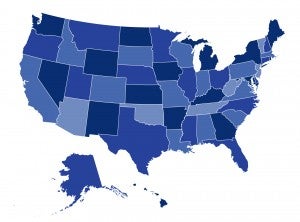Translating Coverage into Care: Answers to Common Post-Enrollment Questions

Open Enrollment has ended in the majority of states, and almost 8.5 million people signed up for coverage through HealthCare.gov. As consumers begin to use their 2019 plans, a host of questions about covered services, cost sharing, provider networks and more are sure to crop up. Luckily, CHIR has answers to frequently asked post-enrollment questions in our recently updated Navigator Resource Guide.
December Research Round Up: What We’re Reading
Complacency Slows Aggressive Approaches to Health Care Cost Containment: A View from Three Markets

Consolidation among hospitals and physician practices is driving a steady rise in health care costs. Employers who purchase insurance and the payers that negotiate on their behalf have a limited set of tools available to counter providers’ demands, but they have also displayed a complacency that has allowed prices to rise with little resistance. In a post for the Health Affairs blog, Sabrina Corlette, Jack Hoadley, and Katie Keith share findings from a series of market-level case studies on responses to provider consolidation.
Texas Court Ruling Throws Future of ACA’s Pre-existing Condition Protections, Coverage Gains into Doubt

A district court judge in Texas has issued a ruling that could throw close to one-fifth of the U.S. economy into chaos and upend health care for millions. While the case over the future of the Affordable Care Act wends its way through the courts, CHIR takes a moment to think about what the decision could mean for the consumers and families for whom the law has been a literal lifeline.
State Insurance Department Consumer Alerts on Short-Term Plans Come Up Short

Open Enrollment for 2019 has ended in most states, but consumers are sure to be bombarded with sales pitches for alternative insurance products well beyond the December 15th deadline. Short-term plans are often marketed as lower-priced substitutes for ACA-compliant coverage, even though they cover far less. Since the Trump administration lowered federal guardrails on short-term plans, it has become particularly important for state insurance departments to highlight the limitations of these products. CHIR looked at insurance department websites to see what information was available for consumers regarding short-term plans.
November Research Round Up: What We’re Reading

This November, we at CHIR celebrated Thanksgiving with a Research Buffet. CHIR’s Olivia Hoppe digs into research that looks at issues including health insurance literacy, the financial implications of subsidized health insurance, the impact of the Affordable Care Act on American workers, and Medicare Advantage.
Large Employer Strategies to Combat Increasing Healthcare Costs: Trends in Direct Contracting, On-Site Clinics and More

Employers currently insure 155 million people, but many are finding it increasingly challenging to maintain this benefit in the face of rising costs. One of the primary drivers of these costs is high provider prices. Some employers are taking matters into their own hands by disrupting traditional modes of care delivery. CHIR’s Emily Curran takes look at some of the tactics that have been gaining traction among employers.
In the Wake of New Association Health Plan Standards, States are Exercising Authority to Protect Consumers, Providers, and Markets

States have begun to respond to the Trump administration’s new rules for association health plans with a wide range of regulatory strategies. In their latest post for the Commonwealth Fund’s To the Point blog, CHIR researchers analyzed how states are using their authority to set association health plan standards and protect consumers, providers, and their markets.
New Georgetown Report: Assessing the Effectiveness of State-Based Reinsurance

As state legislatures across the country prepare to convene in 2019, improving access to affordable health coverage will likely be on the agenda. Several newly elected officials have expressed an interest in establishing a state reinsurance program, following in the footsteps of a handful of states who have utilized the Affordable Care Act’s 1332 waivers for this purpose. As reinsurance gains ground as a state-level effort to promote market stability, stakeholders can learn from the experience of states that have already implemented reinsurance programs. In a new report from Georgetown, authors Rachel Schwab, Emily Curran, and Sabrina Corlette evaluate progress in the three states that have operational reinsurance programs: Alaska, Minnesota, and Oregon.

